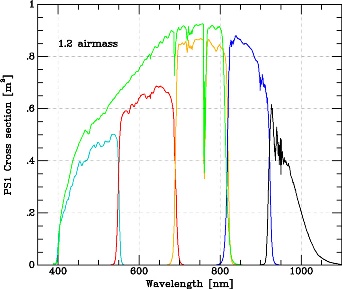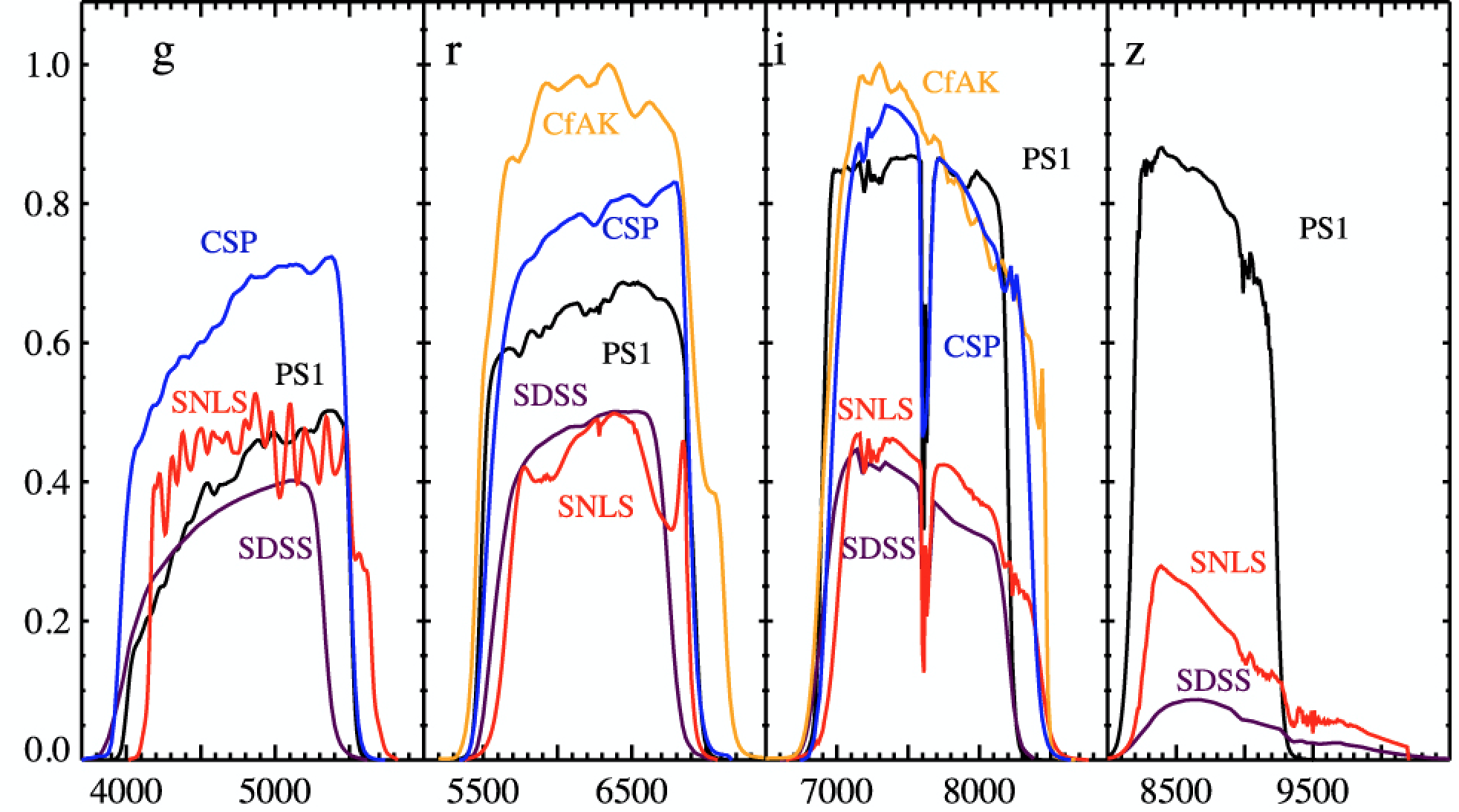Page History
Versions Compared
Key
- This line was added.
- This line was removed.
- Formatting was changed.
The PS1 observations are obtained through a set of five broadband filters, designated as grizyP1. Under certain circumstances PS1 observations are obtained with a sixth, “wide” filter designated as wP1 that essentially spans the gri bands.
| Tip | ||||||
|---|---|---|---|---|---|---|
| ||||||
|
The starting point for the PS1 data archive is at Pan-STARRS1 data archive home page.
References
The following information is taken from these papers, which should be cited appropriately
- Chambers et al. 2016, The Pan-STARRS1 Surveys
TJ. Tonry et al. 2012, The Pan-STARRS1 Photometric System
C. Stubbs et al. 2010, Precise Throughput Determination of the PanSTARRS Telescope and the Gigapixel Imager Using a Calibrated Silicon Photodiode and a Tunable Laser: Initial Results
D. Scolnic et al. 2015, Supercal: Cross-calibration of Multiple Photometric Systems to Improve Cosmological Measurements with Type Ia Supernovae
- A link the the overall Pan-STARRS throughputs as shown in the Tonry et al. figure below are here at Vizier or also as a machine readable ascii file here
Filter descriptions
The Pan-STARRS1 observations are obtained through a set of five broadband filters, designated as grizyP1 . Under certain circumstances Pan-STARRS1 observations are obtained with a sixth, “wide” filter designated as wP1 that essentially spans the gri bands. There is full sky 3π sky coverage in each of grizyP1 but not in wP1, which was mostly used for near-earth object surveys. Although the filter system for Pan-STARRS1 has much in common with that used in previous surveys, such as SDSS (York et al. 2000), there are important differences, which is why the filters are labelled specifically with the P1 subscript. The gP1 filter extends 20 nm redward of g-SDSS with the intention of providing greater sensitivity and lower systematics for photometric redshifts. The strong [O I] 5577 sky emission is on the filter edge but only at 1% trans- mission. The zP1 filter has a sharply defined cut-off at 922 nm, which is contrast to the SDSS-z band which is has no red cut off and the response is defined by the detector response. The rP1 and iP1 filters are very similar to SDSS and colour differences between the two magnitude systems are small. SDSS has no corresponding yP1 filter. The transmission of the Pan-STARRS1 filters, optics and total throughout were precisely measured with a calibrated photodiode and a tuneable laser, without use of celestial standards by Stubbs et al. (2010). The definition of the photometric system has already been discussed in detail and published in Tonry et al. (2012b). Photometry is in the “natural” Pan-STARRS1 system in “monochromatic AB magnitudes” (Oke & Gunn 1983) as described in Tonry et al. (2012).
| ||||||||||||
Figure from Tonry et al. 2012 : The PS1 capture cross-section in m2/e/photon to produce a detected e− for an incident photon for the six Pan-STARRS1 bandpasses, grizy and w for a standard airmass of 1.2 The mean wavelengths are:
| ||||||||||||
|---|---|---|---|---|---|---|---|---|---|---|---|---|
| ||||||||||||
| Figure from Scolnic et al. 2015, showing comparisons between the grizP1 and other survey filters (CSP = Carnegie Supernova Project and CfAK = CfA-Keplercam, SNLS = Supernova Legacy Survey |
 Image Removed
Image Removed Image Added
Image Added
Figure from Tonry et al. 2012 : The PS1 capture cross-section in m2/e/photon to produce a detected e− for an incident photon for the six Pan-STARRS1 bandpasses, grizy and w for a standard airmass of 1.2


